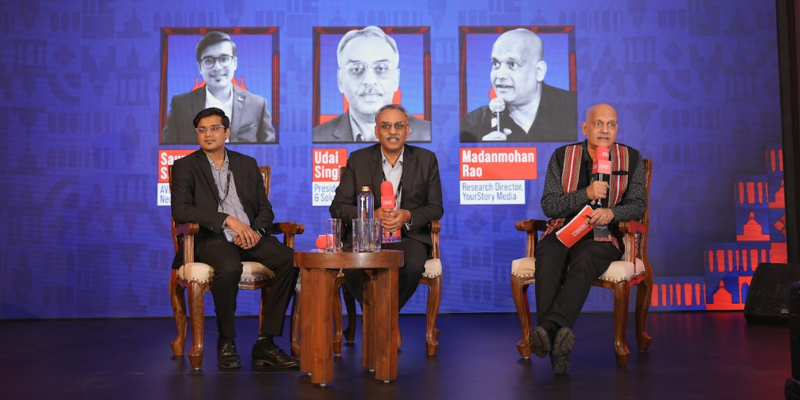Cleartrip's mobile journey from 2010 to 2015
Earlier this year, YourStory did a story on Cleartrip revamping its mobile website. The CMO Subramanya Sharma told us, "Right now, mobile web contributes to 47 per cent of mobile traffic. The rate of growth is similar to that of the apps." He added that from a financial standpoint, apps make a lot of sense: lifetime value, conversions, and retention are all much better than the mobile web.
Apps, he said, would continue to get a lot of mind share from companies because of the above reasons. There is also a customer angle to this: consumers have space and time constraints and need to decide whether they want to use a brand on the mobile browser or as an app.
Subramanya said Cleartrip’s users will have the freedom to pick their platform of choice. "We will continue our efforts to keep both the web and the app environment for our users, and strive to make them better," he added.
Also Read: [Infographic] Clash of the Titans: MakeMyTrip vs. ClearTrip vs. Yatra

Launching the MVP in 2010
Cleartrip's mobile journey began way back in 2010. "I remember the first time I worked on creating a mobile platform for Cleartrip, it wasn't as popular or exciting as it is today," said Subramanya.
At that point in time, they had launched a MVP, which allowed users to make one-way domestic flight bookings for a single adult and accepted only credit card payments. They wanted to keep the user experience simple and easy with the basic necessities. However, it wasn't an easy task as HTML 5 was not conducive for user experience. "This meant we had to look at a hybrid model of using some native parts and others being HTML 5,"said Subramanya.
Cleartrip hybrid iOS
The first iOS app launched was a hybrid version when the team saw that biggies like Facebook too worked on a native model for their apps. Subramanya added that it worked as a validation for their plan and decision.
This also meant that they needed to add more details to their mobile app and make it more comprehensive. Their mobile versions opened up one-click bookings with 'Express Checkout' facilities. ‘Anytime and Anywhere’ trip details were soon sent to the phone and they also launched comprehensive on-the-go travel guides to booked destinations. Towards the end of 2010, Cleartrip announced the opening of train bookings.
Opening up cancellations
Cleartrip went on to open a Retina display support, work on the apps and web platform and fine tuning its user experience from 2011 to 2014. It also opened Android applications for hotel bookings, started the Cleartrip app for the iPad and more importantly during that time they also announced their in-app cancellations.
Their blog said:
"Designed with Cleartrip’s trademark simplicity and ease-of-use, in-app cancellations are a walk in the park. Tap on any of your upcoming trips in the Trips section and you’ll see a Cancellations button above the trip details. Tapping the Cancellations button takes you into the cancellation flow. For flights and trains, you have the added option to select which passengers or sectors you wish to cancel. You can then review the cancellation options you’ve chosen and the refund you’ll get, before finally cancelling and seeing the cancellation confirmation screen."
Opening an Activities page
Their blog in August this year said:
"We are thrilled to announce the launch of Activities, a handpicked and comprehensive collection of activities, experiences and things to do in your city and also when you are away. For the first time in India, you can now browse and book interesting experiences, from a collection of over 2,000 activities across 30 cities spanning both metros and touristic destinations."
Speaking of this inclusion, Subramanya said, "People approach travel in a much more holistic and complete way. And this isn't just in long format travel. Most want to know what's happening in and around a particular destination." He added that the Activity section of the app works towards figuring out any kind of activity an individual intends to do. "You might be able to travel every weekend, but there are other activities you can look at," he said.
The blog said:
"We are striving hard to bring the holiday experience to your city, and without you having to travel. As of now, we have a wide range of 150 themes – culinary classes, food walks, segway tours, luxury bike rentals, yachting, adventure, go-karting, photography trails, hiking, kids’ day outings, night treks, and more."
Traction and market space
Cleartrip's recent-most quarter reported an inflection point for its mobile-first customers, where over 58 per cent of its total traffic came from the mobile channels, overtaking our desktop channel for the first time ever.
"With over eight million downloads of our apps, we've noticed that for Cleartrip, over 70 per cent of our mobile customers are now using mobile as their only channel of transaction (either through app or mobile web),"Subramanya said.
Although the online travel industry in India has been growing rapidly from 2005, the industry is still to consolidate and mature. Air travel dominates the current scenario, with 60 percent market share ahead of railways which contributes 15 per cent of the market solely from IRCTC.
Hotels constitute 13 per cent and the rest is split between buses and cars. The e-commerce industry in India, currently pegged in the range of USD 11-16 billion, has over 70 percent of the numbers coming from the online travel sector, with the rest coming from retailing. By the end of 2015, the Indian online travel market is expected to hit a gross online bookings number of USD 12.5 billion, with a huge push coming from mobile traffic.











